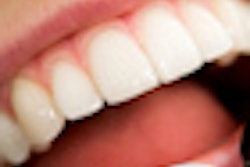Researchers at the University of Granada and Virgen de las Nieves hospital have developed a new radiotherapy technique they say is less toxic than other approaches used to treat cancer of the oral cavity and pharynx.
More than 70% of oral and pharynx cancers treated with surgery require supplementary treatment with radiotherapy occasionally associated with chemotherapy, due to the high risk for recurrence and spread through the lymph nodes, said the researchers in a press release. Radiotherapy and chemotherapy are highly toxic, mainly due to the ulceration of the mucous membranes lining the oral cavity; this toxicity leads many patients to stop the treatment, which significantly reduces the chances for cure.
By using a risk map obtained with the collaboration of the surgeon and the pathologist, an individualized treatment plan was designed and adapted to the specific risk level of recurrence in each neck area. The volume of tissue irradiated was significantly smaller than that usually irradiated with traditional techniques.
A clinical trial conducted between 2005 and 2008 included 80 patients diagnosed with epidermoid cancer of the oral cavity and pharynx who had undergone lymph node removal. The affected nodes were located by the surgeon during the intervention and classified into different risk levels. This classification approach allowed physicians to target the areas at a higher risk of recurrence so that neck areas at a lower risk of containing residual cancer cells were not irradiated.
According to a three-year follow up, this new technique was found to reduce the volume of irradiated tissue in 44% of patients. A total of 95% of patients completed radiotherapy and presented significantly lower toxicity than patients treated with the traditional technique, and recurrence rates did not increase, according to the researchers.
This new protocol provides a less invasive but equally efficient cancer postoperative treatment for cases of cancer of the oral cavity and pharynx, they concluded.



















